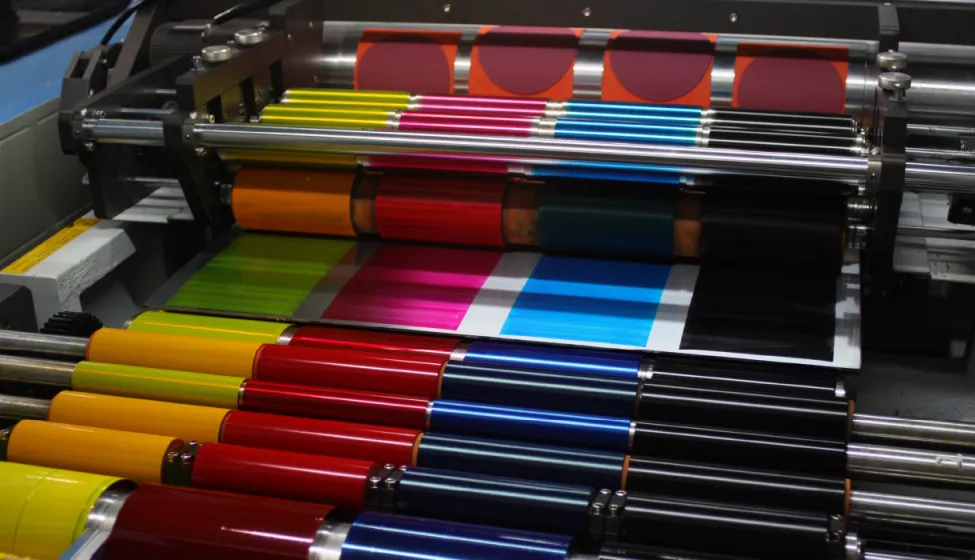December 3, 2021
Proposals for a German Printing Ink Ordinance have been reintroduced amid ongoing efforts to ensure effective protection of consumers
In 2014, Germany announced its intention to regulate the use of printing inks for food contact materials through a printing ink ordinance. This was later placed on hold when the European Commission (EC) started work on measures to harmonize the regulation of printed food contact materials, work which was paused when the EC announced a more general review of over-arching food contact legislation. While this work remains ongoing, German authorities have reintroduced their intention to regulate printing inks nationally through an amendment to the German Consumer Goods Ordinance. The proposed regulation has the potential to impact the food and food packaging industries globally.
Printing inks used on food contact materials are complex mixtures of chemicals that include pigments, solvents, binders, additives, photo-initiators, monomers, and more. They are usually applied to the non-food contact surface of the product, but migration can still occur into the foodstuff through diffusion, partitioning, or set-off. Although specific legislation at the EU level does not exist for printing inks, they must comply with the so-called Framework Regulation (Regulation (EC) No 1935/2004) and GMP Regulation (Commission Regulation (EC) No 2023/2006), which state that any substance in or on a food contact material, including printing ink substances, must be manufactured according to good manufacturing principles (GMP) such that constituents do not transfer into foodstuffs in quantities that could endanger human health or bring about unacceptable changes in composition or organoleptic characteristics.
Currently the only European country that has national legislation related to printing inks is Switzerland.
Part A of Annex 10 of the Swiss Printing Ink Ordinance contains a positive list of substances that can be used in printing inks on the non-contact surface of food contact materials. The Swiss Food Safety and Veterinary Office (FSVO) and German Bundesinstitut für Risikobewertung (BfR) currently have an informal arrangement whereby they collaborate on the evaluation of the safety of new printing ink substances whilst considering suitability for inclusion in the Swiss Ordinance. It is unknown whether this will continue when the proposed German Printing Ink Ordinance comes in to place.
Either way, any dossier submitted in support of an application for approval of a new printing ink component should follow the European Food Safety Authority (EFSA) Note for Guidance for plastic materials and articles, which requires data about the identity of the substances, their physical and chemical properties, their intended use, their legal authorization in other regions, information on their toxicity, and their migration potential, as well as that of any associated non-intentionally added substances (NIAS).
Although the registration of printing ink constituents with Swiss authorities is a voluntary step where these are being placed on the market in other European countries or the UK, it is highly likely that controls on inks will be harmonized in the near future across all member states, following Germany's proposed lead. Inclusion of a substance on the Swiss Ordinance currently allows a manufacturer of a printing ink component, as well as users of printing inks, to demonstrate they currently meet the general requirements of the Framework Regulation and that they are manufactured in accordance with GMP. It is also likely that substances included in Part A Annex 10 of the Swiss Ordinance will be adopted into any future German or harmonized EU-wide controls on printing inks without further evaluation.
How Exponent Can Help
Using our expertise in food contact analytical chemistry, regulations, toxicology, and risk and safety assessments gained from decades of experience working at regulatory authorities around the world, for contract and governmental research organizations, and in industry, we can help clients:
- Collect and interpret the data required to describe the chemical and physical properties of printing ink substances.
- Design, place, and monitor appropriate migration studies.
- Place and monitor toxicological studies.
- Predict potential NIAS formation.
- Interpret sophisticated chemical analysis and toxicological results, determine their chemical and toxicological relevance, and summarize these in assessments forming part of regulatory submissions.
- Submit regulatory dossiers to relevant authorities and act on clients' behalf.


